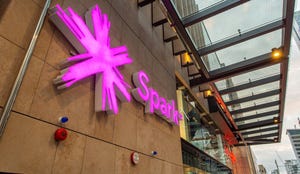Ericsson Touts WCDMA Base Stations
Ericsson introduces new portfolio of WCDMA base stations for smooth capacity growth, fewer sites, and improved power efficiency
February 13, 2006
Ericsson (NASDAQ:ERICY) has launched a new generation of radio base stations to meet customers' needs for smooth capacity growth, fewer sites and improved power efficiency. The new portfolio allows operators to provide services, such as high-speed mobile broadband, at extremely competitive cost levels.
The new base-station portfolio, the market's most advanced, allows for 30 percent fewer sites, increases capacity by 50-150 percent and is optimized for cost efficiency at every site. It also enhances power efficiency, with power consumption cut by a further 35-55 percent.
Improved integration contributes to the radio base stations being half the size of previous models. This also provides for the introduction of new, multi-access GSM/WCDMA base stations: these allow GSM to be upgraded seamlessly to WCDMA and operate in both GSM and WCDMA networks in parallel.
Kurt Jofs, Executive Vice President, Business Unit Access, Ericsson, says: "Consumers demand coverage in all different environments and this brings new challenges for operators. The new portfolio provides our customers with an optimal solution for each site, and more important, reduced total cost of ownership."
The new generation of WCDMA base stations, called RBS 3000, includes distributed, carry-to-site, multi-access and mega-capacity products for both indoor and outdoor use. All base stations feature scalable and flexible radio configurations, transport capabilities and power options.
The product portfolio is already available for the 850, 1900 and 2100MHz frequency bands. It will also fully support all coming frequency bands, including 900, 1700, 1800, 1700/2100 and 2500MHz.
The portfolio is based on the new Ericsson design base R3 hardware platform, with standardized modules for baseband, control, radio and filter functionality.
The mobile-data throughput capability of the most cost-effective RBS 3000 node is more than 400GB per day, resulting in a broadband radio network at a cost of less than EUR 1 per GB.
To support 3G evolution, the new generation of base stations is also prepared for Super3G, what the industry is now starting to call WCDMA Long-Term Evolution.
Ericsson AB (Nasdaq: ERIC)
You May Also Like










